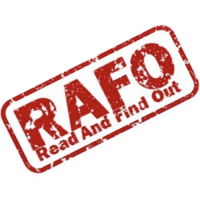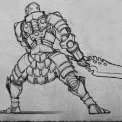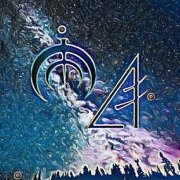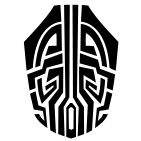Search the Community
Showing results for tags 'magic systems'.
-
I am making my own magic system. It has been in development for a long time. The issue is I know I want there to be eighteen elements, but I can only think of seventeen. I have put them into pairs as well. I am open to suggestions for the last element Edit: I have come up with the last element, but I need some help coming up with descriptions for each one. Use this link to access the document. It is set to suggesting. That means that I will approve the changes made. .
- 7 replies
-
1
-
- magic systems
- elements
-
(and 2 more)
Tagged with:
-
In the Coppermind article on Investiture, it says "Methods of accessing Investiture can be broadly divided into two types: physical and mechanical," but it doesn't expound on that. So what does that mean? What magic systems are physical and what are mechanical?
- 13 replies
-
1
-
- investiture
- magic systems
-
(and 2 more)
Tagged with:
-
We see on multiple worlds that the intent of a Shard is directly related to how the magic system on that world functions: Awakening on Nalthis is the giving of Breath to something else; bonding a spren on Roshar requires honoring oaths; end-positive Allomancy and end-negative Hemalurgy on Scadrial; etc. So, how is Sand Mastery related to the intent of Autonomy?
- 3 replies
-
- shards
- magic systems
-
(and 2 more)
Tagged with:
-
So we all know that one of the main things that Brandon is known for throughout the industry is his genius and incredibly in-depth systems of magic. Everything from Feruchemy, to Surgebinding, Allomancy and even the Shardblades (not really a system so to speak...I mean they kind of are..). My question for my fellow Sharders is what one is your favorite? It doesn't have to be the most in-depth and complicated one but rather the one that gives you the most joy to read about. For myself it's got to be Allomancy, something about the constant manipulation of the steelpushing and ironpulling to maintain a sort of flight is very appealing to me.
-
Okay, so awhile ago @Unlicensed Hemalurgist had a thread about needing help with a Sandersonian magic system for a mystery novel (click here to view it), and that got me thinking. I need help with a magic system I'm currently working on, too, so why not post a similar thread (yes, I am admitting that I'm a copycat). Anyways, my story isn't exactly a detective story. It's an Alternate History / Cyberpunk / Urban Fantasy story set in the year 2134 in a really, really crappy alternate version of earth. Here are some ideas for the magic system I already have: There are four branches of it: Physical, Mental, Spiritual, and Digital. You can specialize in one or two branches, or generalize in all four. Some specialists have minor-moderate skill in their non-specialized branches, but not to the extent of a complete generalist. You have to be born with the talent to use it, but you choose whether you're a one-specialist, two-specialist, or generalist. Whether you have any skill in your non-specialized branches depends on how skilled you are at magic in general. It's sort of a combination of Allomancy and AonDor. It also might have tattoos as part of it, but I might not. It cannot be used to "enchant" objects. Also, for those of you who are curious, although the magic system has been common knowledge and was commonly practiced for centuries, the main point of divergence from our history was in World War 2.
- 2 replies
-
2
-
- magic system
- worldbuilding
-
(and 1 more)
Tagged with:
-
Arrival has been an obsession of mine since first seeing it. The way it unfurls a deep mystery surrounding a unique language which turns eventually into to something VERY unexpected. SPOILER ALERT (Major for Arrival + Minor for The Cosmere Novels) – If you haven't seen Arrival, go watch it. If you haven't read Mistborn, the current Stormlight books, or Elantris, go right now. Read them. Thank me later. Then continue reading this. While Sanderson has talked about magic systems in films such as Harry Potter and Star Wars, there's something much more to Sanderson's books that I don't think any film has quite captured until now. The unravelling of mystery through discovering the truth about how the world works. Let me explain this. In Mistborn we see the world through Vin. Much of Vin's story takes place doing research and trying to decipher the truth about Allomancy, Feruchemy, and Hemalurgy. It's through discovery and revelation that the plot unfolds. Same goes with Stormlight, our bookworm being Shallan. It's through her's and Kaladin discovery that most of the plot moves forward. Finally, the entire story of Elantris is built upon Raoden discovering the truth about the Shaod. While it's Sanderson's non-cliche form of Fantasy that makes him stand out in this genre, the true stroke of intrigue is that each of his stories is built upon mystery – and a very unique type of mystery, almost like solving scientific ones. In most mystery stories, the truth is built upon "Who did it?" or "What actually happened here?" but Sanderson presents very different and unique mysteries built around understanding the world and the way it really works. Arrival, as far as I see it, is the first film to do this. We've seen similar mysteries in Animes, such as Full Metal Alchemist, and in shows such as Stranger Things, but Arrival is the first film of it's kind to dive deep into a mystery that pays off with an almost magic-system-like revelation in the end. Our protagonist explores a language and tries to decipher the alien's intent. Her discoveries lead to her having the ability to see time linearly almost allowing her to time travel, in a sense. It's an ability anybody can learn, it seems, but it takes a deep understanding of a language very few are likely to be able to interpret and learn. Anyway, what are your thoughts here? Do you agree? Also, any other films you think fall into this category?
-
Hey, So I have no idea if this has been talked about before or if the idea is new, but I recently started thinking about investiture and the way it works. So I was wondering if all power in the Cosmere comes from one main source "investiture" and each magic system is basically a "lens" which you use to channel investiture into different forms e.g. different metals cause different powers in Mistborn and the Aons and their modifiers change the way AonDor acts. Therefore is it possible to combine multiple "lens"/Magic Systems to create new powers not necessarily connected to the original system where combinations of magic systems create new different magic systems. Anyway, it was just a thought and I think it would be an interesting thing to see especially with Hoid collecting different types of investitures, he could have weird unexplainable powers caused by mixing investitures.
- 8 replies
-
- magic systems
- investiture
-
(and 1 more)
Tagged with:
-
I'm probably oversimplifying some pretty complex issues here, and retreading some old ground. But, as I understand it, all end-positive magic systems in the Cosmere are basically this thing: It's called the Fun Factory(tm). You put your Play-Doh(tm) underneath the red flap, then you push the flap down. The pressure forces the Play-Doh through a hole, extruding it into a funny shape. The blob of Play-Doh that goes into it? That's your investiture source. Preservation. Stormlight. The Dor. It's raw Shardic power. Formless and without specific function. The Fun Factory is you. The Allomancer, or Surgebinder, or Elantrian. You draw that raw, amorphous power into your body, and you turn it into something direct and specific. A force of repulsion against metal. 'Awesomeness' that reduces friction. A light source, or a deadly fireball. But what's that blue thing? That's the hole that your Play-Doh is extruded through. And you can swap it out for a different one. This is the piece that determines what shape your Play-Doh takes. In allomancy, this would be your metal. Each metal produces a different effect, channeling your Preservation-power into a different magical ability. In AonDor, it's the Aons themselves. Which Aon you draw determines the magic. It's the same in Forgery, Dakhor, and ChayShan. All across Sel, it's the shape you make that determines your magical action. On Nalthis, it's about the command. Every awakened object does something different, because each is given a different command. Metals. Shapes/forms. Commands. This blue thing... is the focus. So really, I think this is the definition of focus: It's the element of a magic system that determines the magical effect, or the precise action of investiture. It's the category whose internal variation corresponds to the versatility of the magic system as a whole. (Here's the WoB that backs this up: http://www.theoryland.com/intvsresults.php?kw=allomancy+aon) Which brings us, inevitably, to the question of Roshar. A common theory (endorsed by the Coppermind) is that gemstones are Roshar's focus, because Surgebinders and fabrials both rely on gemstones. But my definition disagrees. Kaladin can draw stormlight from any gemstone (or from a non-gem source), and his powers always remain the same. Whether he uses emerald broams or diamond chips, flying is still flying. Lift, notably, doesn't need gems at all. To find the focus, look for what distinguishes one type of magic from another. What distinguishes an Adhesion-binder from a Transformation-binder? I think there's only one logical answer. It's the spren. Each surgebinder-type bonds with a different spren. Sure, some spren offer overlapping surges, but the basic fact remains: the magic you can do is determined by the spren you bond. The metal you burn. The Aon you draw. The command you give. And fabrials? Fabrials use specific gemstones because specific gemstones trap specific spren. The real exception to this is the Honorblades, which provide surgebinder-bonds, but are not spren. Or are they? They look and behave exactly like ordinary shardblades. Bonding, summoning, cutting. They're not self-aware, like spren are, but they're clearly the same type of entity: splinters. Objects made of investiture. Honor's investiture, which seems to be inherently bond-forming, whether it's sentient or not. So the focus isn't spren, exactly. It's bond-forming splinters -- a category which consists almost entirely of spren, but also includes the Honorblades. This opens up some interesting speculations of Voidbinding. Is it done by bonding different spren, i.e. Voidspren? Or is it like on Scadrial, where different magic systems use the same foci? Maybe Voidbinding is just surgebinding, but with a different power source. Maybe Kaladin could intake the 'voidlight' from the mysterious black sphere, and access a new power-set.
- 30 replies
-
27
-
- focus
- magic systems
-
(and 5 more)
Tagged with:
-
This thread is a mix of a few things all stemming from my notice of cliches built around Magic Systems and World Building. My Hopes For This Thread: To discuss everyone else's opinion on how they feel about tropes/cliches in Magic Systems and World Building. To challenge the fellow writer's out there to begin thinking differently when creating; to not settle for what's easy. To learn who out there thinks in similar ways as myself but also to learn strong oppositions. What This Thread is Not For: It is not a place to get defensive. I want myself and others to be challenged by this thread. Allow yourself to open up to opposition. This doesn't mean you shouldn't defend your stance – we want that. Just don't be upset on opposing views nor defend little things simply to defend your honor. It is not a place to attack someone. The last thing we want is someone presenting an opinion to have it attacked belligerently. This is a discussion and debate, not a place to over-react or criticism. So without further ado, let's start by talking Elemental Magic. The one thing that begun this thought process was in something I noticed in many writers abounding with desire to write fantasy. Can we move on from Elemental Magic? Don't get me wrong. I love the elements. I love the magic built around elements. Mistborn is basically elemental via metal. I am also obsessed with Avatar/Korra. But seeing "Here's my version of Earth, Air, Water, Fire." in every place you look gives me negative emotions about it. I think elements are key to magic. I think having magic perhaps based on only one element would be extremely awesome. But it feels contrived at this point. Not to mention, most writers are trying to take Elemental Magic and give their own spin on it. In turn, we only get a convoluted mess of a system that has too many powers for someone without a spreadsheet to get a grasp of. What is your take on this?
- 1 reply
-
2
-
- magic systems
- writing
-
(and 1 more)
Tagged with:
-
Hey, I'm working on a world and, while the magic is pretty well written, my world building is somewhat lacking. Could you maybe help me flesh some things out? I've got this much figured out. I know it's not much to go on, but maybe you could figure out some places that the creatures here would choose or be forced to live. Thanks for the help!
-
So hey, I'm new here and I apologise in advance if this has been brought up/answered before. I was wondering, what with the localised magic systems on Sel, why is it that the Elantrians seem to retain their overall appearance and physical changes (e.g. Raoden being able to run faster than other humans etc.) when travelling to Teod, but not their specific powers? Similarly, the Dakhor monks don't just become "normal" when leaving Fjorden, but retain their... modifications? I actually have multiple questions about this. Is it possible that they could reach a certain distance from their homeland where even these changes would fade and they would revert to normal human beings? Or do you believe that they will stay the way they are? It seems, IMO, that the Shaod can only take someone in Arelon and one can only become Dakhor in Fjorden, but while the "activation" of these processes can only happen in a specific location, (at least some of) their effects are kept even if someone travels to another place. Similar to this is the case with Forton's potions, which I read (somewhere on this forum) are confirmed as somehow Invested, but are still effective outside his homeland. If this is the case (and I'm just wildly speculating here), if someone were to change themselves (or even an object?) via Soulstamp/Essence Mark and then travel to another country, would it hold? It's pretty clear from other examples that you would not be able to apply the stamp elsewhere, but would it be "rejected" once taken away from MaiPon? Of course I could be wildly wrong here but I wanted to ask what everyone's opinion on this is and whether or not Brandon has said anything about this that I've missed.
- 5 replies
-
- dakhor
- elantrians
-
(and 2 more)
Tagged with:
-
Hi guys! I have been thinking a lot about how Allomancy and Feruchemy are genetic, and how the blood lines are being diffused, and realized that unless something big happens about it, it will probably almost die out. There are already no new Mistborn or full Feruchemists being born after just 300 years, and even though Brandon Sanderson has said that there will be a Mistborn assassin in the modern day trilogy, I don't see how even weak Mistings or Ferrings could still exist in the sci-fi trilogy unless Harmony gives some sort of power boost to mankind. There were no Mistborn, and only weak Mistings, before the Lord Ruler gave people the Lerasium, and Feruchemists only were around because the Terris people were so secluded and only ever reproduced with other Terris people. So I think that either Harmony gives someone Lerasium, or does something else about the Allomantic and Feruchemical potential in people. Unless he does, the sci-fi trilogy will be really boring.
-
At the February 25 Austin signing for Calamity, a questioner asked Brandon, “How many magic systems are in The Stormlight Archives, and how many of them [have been seen?]” Brandon’s answer: I would say the only major one you haven’t seen is Voidbinding, it depends on how you count them. I count fabrials as one, Surgebinding as one, and Voidbinding as one. And then the Old Magic is kind of its own weird thing. This is Brandon’s most definitive statement (that I’ve seen) regarding Roshar’s magic systems. Let’s look more closely at what the three systems have in common and why the “weird” Old Magic doesn’t fit with the other three. I’ll then address the peculiar features of each system. Common Features Each of these magics (other than the older non-spren fabrials) rely on spren for their efficacy, including the Old Magic. The three “systems” all use the same “powers of creation” in some fashion. They differ from one another only in how the system gives access to and expresses the powers. The Old Magic in contrast seems to use only a few of the powers of creation, if any, which differentiates it from the “systems.” Brandon has said the powers of creation are just “tools” (emphasis added): [T]he powers granted by all of the metals—even the two divine ones—are not themselves of either [Ruin or Preservation]. They are simply tools. And so, it's possible that one COULD have found a way to reproduce an ability like atium's while using Preservation's power, but it wouldn't be as natural or as easy as using Preservation to fuel Allomancy. The means of getting powers—Ruin stealing, Preservation gifting—are related to the Shards, but not the powers themselves. I interpret this statement to mean that magic systems wherever located differ only in “the means of getting powers” and how the powers express themselves. How do each of Roshar’s magic systems differ? Surgebinding We know that the essence of Surgebinding is the Nahel bond. That is the “means” by which Surgebinders “get” the ability to use the powers of creation, which on Roshar are called “Surges.” Q: The ten Surges on Roshar, I think you said are basically a different set of laws of physics. A: Yeah. Q: Are those laws of physics consistent throughout the Cosmere? A: Um, y-y-yes, to an extent. You would consider, like - it's kind of weird because I based them on the idea of the fundamental forces, but this is kind of like a human construction. Like you could say that physics is pure and natural, but we're still putting things in boxes. And the scientists on Roshar would for instance consider being able to travel between the Cognitive and Physical Realms as a force, the thing that pulls people back and forth between that, as a fundamental force. I don't know if it would fit our definition of a fundamental force. That statement is also from the 2/25 Signing. IMO the reason the Nahel bond gives a Surgebinder access to the Surges is because the bonded spren is cognitive investiture. The bonded spren uses its mind to direct the Surges it controls as the Surgebinder requests. The Surgebinder thinks what he/she wants to do and the spren does it. Forum consensus (but not canon) is that Honor and Cultivation combined their investiture to create the Surgebinding system. This is an example of what Moogle calls “intent-meshing,” but what I call “mandate-meshing” since I think “mandate” is the textually proper word for what we’ve been calling “intent.” (See the HoA Chapter 79 Epigraph.) Honor’s mandate is “to bind,” as Syl tells us. Honor’s investiture creates the Nahel bond. But the bonded spren are a mix of Honor’s and Cultivation’s investiture. The two exceptions IMO are Bondsmiths’ spren (the Stormfather, Honor’s Cognitive Shadow comprised of pure Honor investiture); and Truthwatchers’ spren (pure Cultivation investiture, though connected to their KR’s SpiritWeb by Honor’s Nahel bond). I base my conjecture on the fact that these are the only two Orders “inside” the KR Order Chart (what I call the “Round Table”) that appears on the front endsheet of WoK. Argent has asked the question, “out of the potentially hundreds, if not thousands of spren types, why do the Radiants bind with only ten?” I believe the answer is that the ten spren types who became Radiantspren imitated the Honorblades. Each Honorblade is capable of two Surges. Only spren capable of exercising the same two Surges as each Honorblade - IMO the right mix of Honor's and Cultivation's investiture - would bond with KR. Other spren would have a different mix or be something else entirely. Those spren couldn't exercise the same Surges as the Honorblades. They cannot be Radiantspren. Fabrials There are two broad types of fabrials – the modern fabrials mentioned in the WoK and WoR Ars Arcana and ancient fabrials that seem not to rely on spren at all. We’ve seen two examples of ancient fabrials – ones that enable Soulcasting and Regrowth (the Transformation and Progression Surges). We don’t know whether the fabrial “magic system” includes both modern and ancient fabrials or one or the other. Brandon has said that “Fabrials can replicate all of the Surgebinding abilities.” Arguably the Honorblades themselves are non-spren fabrials that grant the ten Surges. The Oathgates are another ancient fabrial, but they require a “living” Shardblade – a spren; these may be more akin to modern fabrials, but maybe not. All fabrials of whatever kind require Stormlight to operate. The WoR Ars Arcanum author, believed to be Khriss, is “more and more convinced that [modern fabrial creation] requires forced enslavement of transformative cognitive entities, known as ‘spren’ to the local communities.” Note that Khriss confirms that spren are comprised of cognitive investiture. Modern fabrials lock the spren into specific types of gems. The color, cut and size of the gems appear responsible for attracting the spren, its imprisonment, the amount and “wavelength” of Stormlight the spren gain access to, and/or the type of magical output the fabrial creates. Khriss categorizes fabrials into five “groupings”: Altering (Augmenters and Diminishers), Pairing (Conjoiners and Reversers), and Warning. Fabrials “appear to be the work of dedicated scientists, as opposed to the more mystical Surgebindings once performed by the Knights Radiant.” While Khriss seems to write the Ars Arcanum contemporaneously with WoR events – she knows of the Jah Keved half-Shards, a recent development – she seems ignorant of the KR’s re-emergence. IMO the two distinguishing features of modern fabrials are the use of gemstones to capture spren and reliance on merely sentient spren. Surgebinding uses the more heavily invested sapient Radiantspren for its magic. “Altering fabrials,” for example, “seem to work best with forces, emotions or sensations” like heat, pain or wind. We know that sentient spren have access to the Surges too: windspren, for example, can use Adhesion to trip people. I also believe that whatever spren is imprisoned in spanreeds gives the users access to the Transportation Surge: the writing is “transported” over distance. Voidbinding There’s been some excellent speculation about Voidbringer magic, most notably on this thread begun by Argent. Brandon’s 2/25/16 statement clarifies, however, that listener Stormform cannot be “voidbinding,” since we HAVE seen that magic. Lightflame in that thread suggests that listener Stormform is Voidbringing, since that form enables the listeners to summon the Everstorm, the phenomenon that will “bring the Void.” Lightflame distinguishes Stormform from the “Voidish Forms” that Argent lists as the believed counterparts of the KR Orders: Nightform, Decayform and Smokeform. As Lightflame notes, these forms are mentioned in the listeners' Song of Secrets. Stormform by contrast is mentioned in the listeners Song of Winds. Stormspren’s ability to cause lightning and violent winds appears innate, like windspren’s Adhesion ability. Neither seems to require Stormlight. There's no need to replicate the discussion on Argent’s thread, linked above. Instead, if you’re interested I suggest you read the entire thread, since the posters there have helpful insights. It’s clear (to me) that Voidbinding resembles Endowment’s reincarnation of the Returned more than any other magic system we’ve seen. Voidbinding in all its known forms relies on the powers granted to/by the Unmade, the listener “gods.” These former listeners are remade by Odium’s investiture. Nightform: “as the gods did leave, the nightform whispered…” (WoR Chapter 23 Epigraph). Decayform: “a form of gods to avoid, it seems…” (WoR Chapter 24 Epigraph). Smokeform: “Crafted of gods, this form we fear. / By Unmade touch its curse to bear…” (WoR Chapter 31 Epigraph). Oh well, all my theories about “Voidbinding” being a combination of Honor’s and Odium’s investiture – Honor “binding the Void” – are now out the window… The Old Magic But I still have hope for this one. Also at the 2/25/16 Event, Brandon and a questioner had the following exchange: Questioner: I kind of envision the Old Magic working a little bit like Hemalurgy, where some[one] takes a part of the Physical DNA of the person and transmutes it onto the Cognitive DNA because everything seems to be a Cognitive shift for the person. Am I thinking along the right lines? Brandon: You are thinking along very-- Yes you are thinking along the right lines. I won’t tell you exactly but you are thinking along the right lines. I hesitate to infer anything from such a squishy answer. (And PLEASE future questioners, do not invite such an answer by building it into your question, as this person did. It probably wouldn’t have made a difference, but it’s best not to provide Brandon with an “out” in advance.) I’ll assume that the “right lines” the questioner was “thinking along” refers to a quasi-hemalurgical connection between two entities affecting one’s Cognitive capacity. Brandon’s answer conveniently parallels my theory that the Nightwatcher – purveyor of the Old Magic – is a combination spren consisting of the Cognitive investiture of each of Cultivation and Odium bound to one another by Honor: Cultivation boons and Odium Cognitive curses. As Brandon says in the opening quote of this post, the Old Magic is “weird.” You can read my theory and its many detractors, so I won’t repeat it here. In summary, the Nightwatcher is the Cognitive element of Odium’s imprisonment in Greater Roshar. Conclusion That’s all, Folks! Enjoy the rest of your weekend!
- 12 replies
-
15
-
- magic systems
- surgebinding
-
(and 4 more)
Tagged with:
-
I'm pretty new to the 17th Shard--and forums in general, really--but I've been an avid reader of Brandon's works since I first read Elantris about five years ago, and I've been aware of the greater Cosmere since I noticed Hoid world-hopping in Warbreaker. As such, I figured I might as well join the discussion, but please bear with any forthcoming ineptitude on my part. All that aside, I figure that with Mistborn: Secret History out we know more than enough about Realmatic Theory to be able to start to analyze and classify the magic in the Cosmere. Moreover, perhaps we might be able to explain exactly what is occurring in the Cognitive Realm when certain things happen. (EX: What happens to someone's Cognitive Shadow if they're killed or maimed by a shardblade?) I also thought it might be fun to speculate about how different powers would interact. Like what would happen if a Mistborn tried to burn a gem filled with stormlight, or if a Surgebinder tried to draw investiture from a filled metalmind. I apologize if somebody's already made a similar post to this one.
- 1 reply
-
- realmatic
- realmatic theory
-
(and 4 more)
Tagged with:
-

Aluminum (possible spoilers of various magic systems)
Stormgate posted a topic in Cosmere Discussion
In a WoB that I read but can't be bothered to find, Sanderson said that aluminum does strange things in every magic system. I may be jumping at phantoms (or however that saying goes), but I decided to make a list of everything aluminum does, and I noticed a surprising pattern: Allomancy: Wipes out all metals in the Allomancer's stomach. It is also immune to being Pushed or Pulled, Emotional Allomancy can't penetrate it, doesn't produce an atium shadow, and I wouldn't be surprised at all if it served as a shield like a Coppercloud, and prevented Pushing and Pulling on metal beyond it as well. Feruchemistry: Stores identity, which has been heavily hinted and theorized to allow access to another Feruchemist's metalminds, possibly even if the Aluminum Ferring can't store that attribute. Hemalurgy: Takes Allomantic enhancement power. Surgebinding: We don't know much about it yet, but we know that Aluminum is apparently only able to be made by Soulcasting. AonDor: I honestly don't know. I'm not very familiar with AonDor in general, and I don't know of any mention of aluminum or the like in AonDor. Forging: Although it isn't mentioned by name, it is extremely likely that the Unforgable Metal that makes up Shai's wall is aluminum. I'm also not ignorant of the possibility that aluminum does the same thing in AonDor as in Forging. That is, nothing. Dakhor, ChayShan: We don't know enough about these magic systems to make any sort of speculation, unless I'm mistaken. Awakening: This one is tricky, since generally metal cannot be Awakened. However, there is one notable exception: Nightblood. Nightblood is heavy, but that is potentially solved by the fact that it is (pun) heavily Invested. Nightblood drains large amounts of Investiture, releasing it as corrupted black smoke. He also is devoted to destroying evil, but he was Awakened with that command. With all the magic systems we know of, (unless I forgot any), aluminum tends to act as a black hole for Investiture, draining it if not simply leaving the magic ineffective. Such consistency in a pattern indicates some sort of larger picture. Perhaps aluminum somehow was responsible for the shattering of Adonalsium, or aluminum is the God Metal for Adonalsium, trying to get its former power back, or aluminum is somehow related to Odium and his ability to Shatter Shards. If anyone has any information on this topic that I missed, or a magic system I forgot, or any other possible theories about why aluminum drains Investiture, I'm open to suggestions. I realize that this is a topic that we know very little about, and so the speculation is likely quite off, but I like speculation on big topics like this. -
There are 16 Allomantic metals, however, there were commonly believed to be only eight. In Stormlight Archives, we are given ten surges, ten essences, ten orders of Knight Radiant, and so on. Are we seeing something like on Skadrial, or is Sanderson drawing our attention with a new 'Law of Ten'? The 16 rule references the 16 Shards of Adonalsium. Would the new law of ten be referencing that there are only ten shards left after Odium killed five and Preservation and Ruin formed Harmony?
-
First ever thread!! Hopefully I can construct these thoughts properly. Though I warn you I will probably end up all over the place. SoS - I've just finished SoS and have seen some bits around about Bavadin's shards intent, Autonomy. It strikes me as pertinent that the identity of a shard has been released so close after finding out there is another likely god metal on Scadrial. I would guess that Autonomy/Bavadin is working with Oduim to splinter the shards to remove the interference of the shardholders from the Cosmere, including himself. As we've seen with Preservation Shards are not frightened to destroy themselves to ensure there intent is met. This fits with the Autonomy. Bleeder also had a fanatical belief she was freeing people from Harmony's interference. The god metal spike seen at the end of SoS had, I believe, bits of red rust on, I wonder if Autonomy and Odium are working together and this has corrupted his investiture, the rust the physical realms representation of this. I like the name Autonium Rust and ruin - WoB has said to look closer at the rust and ruin phrase closer. Ruin is obviously just ruin, but rust could represent a completely different shard. It could be everything I've written so far is wrong. Rust could represent a shard, pluck from the air, Decay maybe? Someone also mentioned on a post a while ago that BS had put a clue in his book regarding Trelagism and Trell was mentioned in SoS, Trell had a brother and his name was Nalt. Nalthis is the planet Endowment is. More overlapping Cosmere theology. Belief - My thoughts on the way Odium splinters Shards and the way shards are powered in a sense would be rooted in belief. One of BS best qualities as a writer is how he incorporates religion into the magic system, and how normal people can become figures or religious belief. Now what if the shards themselves are powered by belief, Bleeder tried to break free Elendel from Harmony's control, for the lack of a better word, but this also would have broken down the belief system and government as part of the plan. This would weaken Harmony and give Autonomy or Odium an opening to attack maybe? Not a great theory but could be plausible. Gateways and Stormlight - This is just a thought I've been having regarding the way magic interacts with different worlds. WoB is that when an allomancer burns a metal it is giving access to the power of the shards/creation, a gateway to access magic, each metal is a gateway to a certain power much in the same way that drawing an Aon accesses the Dor with a specific outcome, channeling the power for a specific purpose. On Nalthis each person has a breath to begin with, they are Endowed with a small part of the shard, much like the way life on Scadrial has both preservation and ruin in them. In Mistborn people are picked for there actions to become more, but as the powers come from both preservation and ruin it's not about good or bad actions but almost random, balanced. This is opposed by the investiture on Nalthis, where you have an innate breath at birth, a link to god, but you are Endowed with a divine breath if you are found deserving, dying to save someone. Each of these links or gateways can run out or be used up with The exception to the rule is Roshar, I think anyway. Spren are the gateway and stormlight is the power that is used. Does this mean that Roshar is the nexus for the power of creation as stormlight is freely available to all people, just most don't have the link to access it personally. Like I say these are mostly the ramblings of a madman, think I may have been spiked by BS to miss all points. Thoughts anyone?
-
The Gravitation surge and Steelpulling have similar effects, pulling one thing towards another; the Transformation surge, as well as Forging and one Aon I can't remember have Soulcasting properties, changing haw an object thinks of itself. Bronze serves the same purpose as other seeing abilities. How far do the connections go? Does each Allomantic metal have a Surge counterpart, with other pairings in AonDor, Feruchemistry, Haemalurgy, and Breaths? Are these connected to the Shards somehow? (i e each Shard has one ability that each magic system uses slightly differently)
- 2 replies
-
2
-
- cosmere
- magic systems
-
(and 1 more)
Tagged with:
-
I was pretty excited when Nightblood showed up at the end of Words of Radiance. I've read almost all of Brandon's books, and this was the first obvious crossover between different series. (The second, if you count Hoid as obvious.) This leads me to wonder how different magic systems of the 'cosmere' are going to interact. The Szeth question in the header is kind of representative of that more general question, but the conversation doesn't need to be restricted to Szeth. The members of this forum seem to have sources of information beyond the books, so please enlighten a fan who doesn't. From Warbreaker, it seems that when Nightblood is unsheathed, it will continuously drain BioChromatic Breaths from its wielder, and kill any wielder who doesn't have Breath. But there doesn't seem to be a steady source of Breaths on Roshar for Szeth to use. Or maybe there is? Can Breath on Roshar be transferred from one person to another by saying the words (My life to yours, ...)? Maybe it's just never been tried? Alternatively, could Nightblood be powered by Stormlight instead? Are Breath and Stormlight (and metals, and whatever powers Aeons, ...) really the same thing? Cheers!
- 22 replies
-
2
-
- breath
- stormlight
-
(and 6 more)
Tagged with:
-
It's been a while since I've been theorizing! It's time to change that. This treatise--and it is a treatise; it is way too long--has a long history in my mind, and now it is finally time for me to actually put it down in writing. (The graph also took forever to figure out how to do, but I finally got it to work. Yes, there's a graph in this theory.) Introduction There is a wide variance in magic in the cosmere, but it has never been clear why some magics might be more related to one than another. Considering Words of Radiance, we know that Stormlight and Breath are similar in many ways. In this exhaustive classification scheme, we will rigorously describe how cosmere magics differ, using Realmatic reasoning, and also provide a high level view on how these magics came into being, and why they act as they do. (Look, I know I should be calling them Investitures or manifestations of Investiture, but I'm going to go with magic systems for now because it is just less clunky than "manifestations of Investiture," okay?) These ideas began, as many things with me do, with a conversation with Windrunner. When we read Words of Radiance, we had many thoughts, and we started comparing magic systems. What makes one stronger than another? The Spiritual fuel is important, but what of spren? In this scheme, I said that Allomancy and Surgebinding was probably the most "powerful" of the magics, but for different reasons. Allomancy was very restrictive, but because it was so restrictive, its effects could be much more impressive. AonDor was also very powerful in its own way, but while flexible, it required a great deal of preparation. So I supposed that maybe there's a "Power" axis and a "Preparation" axis. BioChroma would be of more middling power, but require less preparation. This seemed like a sensible way of organizing the magics together from a high level. But, I had never been satisfied with these terms, as they had no relation with any other cosmere terms. And more importantly, something seemed… missing, somehow. It turned out there were more precise axes to use: Realmatics. We throw terms around like Physical, Cognitive, and Spiritual, but we don't know what they mean as much. But with Emperor's Soul, we know more, and now I'm going to relate these in classifying cosmere magics. Two axes seemed too few, so let's go with three, the typical Physical, Cognitive, and Spiritual. In fact, there are good reasons to use these as attributes. In Words of Radiance, the writer of the Ars Arcanum uses it to describe Lightweaving: Of course, this by itself, is not a new idea. A long-espoused idea is that All Magics have Three Parts. But that theory didn't go far enough. Why? Magics are not equally rooted all three Realms. Time for a short digression on my philosophy on magic: every magic is essentially a Realmatic exchange. Power--Investiture--is moved or transformed from one Realm, say the Spiritual, to a different Realm, like the Physical. Not all magics have the same Realmatic exchange between Realms, but there's always some sort of interaction between all three Realms. For this to happen, a magic system has to be partially embedded in each Realm. Think of it like a chemical reaction: you have three different pots and with the right conditions, you cause a reaction between these three pots, causing various effects. This is not entirely relevant to this theory, but to me it seems to be an interesting way of thinking about magic. It's more fundamental, and to me explains the reasoning why magics need to have roots in all three Realms. It seems obvious that magics will be rooted in each Realm differently. Awakening has a strong Cognitive component that Allomancy does not. Surgebinding requires a Spiritual connection, and is totally different from Awakening and Allomancy. Three different magics, three different distributions in which Realms the magics are rooted. I think the idea of a "focus" can also be fit into this classification scheme. Originally, without Roshar, the focus of a magic system seemed pretty self-evident: Aons/symbols, metals, Commands--with Commands being the least immediately obvious, but in retrospect, Commands do all the "action" of this Realmatic interaction, if you think about it. But Surgebinding just doesn't have an obvious equivalent, and that's totally okay. Brandon has more recently said that the idea of a focus is something that peoples came up with to describe magic, which implies to me that the notion of a focus is not a core, fundamental attribute to cosmere magics. But again, let's not get ahead of ourselves. Let's classify magics. The Model You guys know I have a math degree, right? (Now a Master's degree in fact.) So, this part may be slightly… unnecessarily numerical. Don't worry about it; you can skip the numbers. Mathematical models, at their simplest, start with a few core principles and then use that to construct equations or numbers which hopefully illuminate things. We obviously have little to no true numerical information, so I'll be doing some estimations. But first, let's make our assumptions very clear before insanity begins. 1. Every magic is rooted in each of the three Realms (pretty widely accepted) 2. Depending on magic system, this distribution is not equal. So let's get onto classifying just how much each magic system is rooted in each Realm. It seems sensible that perhaps we rate magics on a scale of 100 points, and we'll have three values, for Physical, Cognitive, and Spiritual. These values need to sum up to 100, so you could say these are the rough estimates for how much a magic is rooted in each Realm. (If you've had probability, you can just scale these to be from 0 to 1 rather than 0 to 100, but big numbers seemed nicer for this). So we might say a magic is 50 in Physical, 30 Cognitive, and 20 Spiritual, for an example. Now, that might seem like a pretty safe assumption, but what I'm effectively doing is saying that I'm normalizing every magic to have the same power level. There's 100 "power" to distribute between Realms. That's a pretty big assumption! We will see minor Shardworlds where Splinters power magics rather than Shards, and those magics will definitely not be as powerful as the Shardic magics. So, our final assumption: 3. Generally all Shardic magics have the same amount of pure "strength"; it is just distributed differently (this may be totally false, but right now we don't have tools to properly measure if one magic is purely stronger than another). With our assumptions in hand, we can begin thinking about magics. But maybe I ought to say what I mean by Physical, Cognitive, and Spiritual. Physical: How much a magic is aligned with things in the Physical Realm. The Physical generally results in more restrictive abilities. Cognitive: How much a magic is aligned with Cognitive things, such as thought, preparation required in manifesting magic Spiritual: How much a magic is aligned to ideals, Identity, and other Spiritual traits. Depending on which Realmatic attribute is dominant will determine how a magic's focus is. Physical magics require a very rigid focus. Cognitive magics have more fluid foci. Spiritual magics may purely not require a focus because of a person's direct connection. We'll talk a lot more about this in a bit. Finally, let's get to business. Scadrian magics are interesting in that they are specially hardwired into a person's Spiritweb (and Hemalurgy revolves on rewiring these, essentially). It's the only cosmere magic like this, with very rigid abilities encoded into you. Many other magics can be accessed more easily, but not the Metallic Arts. You either have it or you don't, or you're a horrible person and like spiking people. I would thus classify all Scadrian magics as Physical. Whereas other magics require significant work to get going, like AonDor, Forgery, or Awakening, all the "work" of the Realmatic interaction is contained in the correct metal. Nothing else is required. Allomancy - Heavily Physical, minor Spiritual (due to its connection with Preservation), very little Cognitive Feruchemy - Physical, about equal Cognitive and Spiritual Hemalurgy - Physical, Spiritual, and Cognitive, but there's more Cognitive to Hemalurgy (since it heavily depends on knowledge of where to put the spikes), and it steals a lot of Spiritual attributes, hence its Spiritual designation. One could argue, perhaps, it is more Cognitive than Spiritual. Nalthian magics are most obviously embedded in the three Realms: color, Commands, and Breath are its Physical, Cognitive, and Spiritual components, respectively. But where does the work lie? It's primarily Cognitive. The visualization and the Command is the most key element to the magic, Awakening - Cognitive, Spiritual, then Physical Selish magics are also highly Cognitive. It requires a lot of work to create just the right Aon or soulstamp. AonDor - Cognitive, Spiritual, very little Physical Forgery - Cognitive, Spiritual, more Physical I'm not including the ChayShan or Dakhor, as we know so little about them, but if we had more data I'm sure we could fit them into this scheme. At the moment, ChayShan seems more Physical, and Dakhor has a more strong Physical component too. AonDor really has the least Physical of all the Selish magics, yet a very strong Spiritual component. Finally, Roshar. This is a Spiritual magic if I've ever seen one. It requires a deep bond with your spren to make the magic work. If you don't have that bond, you need an Honorblade, which I would call a "focus" in this case. It grants that ability for you, giving you that connection to Honor necessary to suck in Stormlight. But in most usual Surgebinding, its dominant attribute--the reason for the power--is your Spiritual Identity. Who you truly are. Surgebinding - Spiritual, Physical, Cognitive (the last two depending on Surge) Of course, in this, I'm generalizing all magics under one umbrella. Certain Feruchemical abilities are in one Realm entirely, and while Windrunning doesn't involve much Cognitive, Lightweaving does. So take these as rough averages at best. Putting it all together: Allomancy - Heavily Physical, minor Spiritual,very little Cognitive Feruchemy - Physical, about equal Cognitive and Spiritual Hemalurgy - Physical, Spiritual, and Cognitive Awakening - Cognitive, Spiritual, then Physical AonDor - Cognitive, Spiritual, very little Physical Forgery - Cognitive, Spiritual, more Physical Surgebinding - Spiritual, Physical, Cognitive And heck, let's put some numbers to it, because I feel that will show a magic's attribute and its distribution more effectively than me blathering: Allomancy: 60 Physical, 30 Spiritual, 10 Cognitive Feruchemy: 50 Physical, 25 Cognitive, 25 Spiritual Hemalurgy: 50 Physical, 30 Spiritual, 20 Cognitive Awakening: 60 Cognitive, 30 Spiritual, 10 Physical AonDor: 50 Cognitive, 45 Spiritual, 5 Physical Forgery: 50 Cognitive, 40 Spiritual, 10 Physical Surgebinding: 60 Spiritual, 20 Physical, 20 Cognitive That seems to sum things up pretty nicely. The only one I'm not really sold on is Forgery, since it throws around much less power than AonDor, but yet still deals with Identity (a very Spiritual attribute) heavily. Perhaps if we consider that AonDor only seems so powerful with the help of Elantris, this power disparity doesn't seem nearly as extreme. So of course, here's a pretty graph displaying this info: Each color corresponds to a particular world: Red - Scadrian Purple - Nalthian Blue - Selish Green - Rosharan But what is a 3D graph from just one angle? That's why I made a fully interactive version for your viewing pleasure! Now that I think is pretty slick. Power levels and Cognitive Intermediaries And with that model in place, we can get back to the discussion Windy and I originally had, about relative powers of a magic. Tied up in this question also will be spren and foci. Remember, in my conception of magic, manifestations of Investiture occur because Investiture is being shifted between the Realms. This effects don't happen in a vacuum; they require a user, and almost always, they require activation of some sorts, a will for magic to occur (the only time it doesn't is when Allomancers unconsciously burn metals). But more importantly, there needs to be a catalyst for this Realmatic interaction to occur. If we think about Surgebinding and Shallan Soulcasting, Pattern acts as her intermediary in Shadesmar. Given Syl talks about magic being an "agreement with friends," it seems reasonable to say that your spren is the thing that, in the Cognitive Realm, makes this interaction work. It all comes back to the Cognitive Realm, really, because Shadesmar connects the Physical and Spiritual. It's where change happens. (Is it any wonder that Shadesmar is predominantly water? Liquids are a transitionary state of matter between solids and gases) I'll call spren a Cognitive Intermediary, or an Intermediary more simply. These are the catalysts that make magic all work. So, that immediately asks the question, do other magics have a similar Intermediary? Of course! They are focuses. I originally defined a focus as something that shapes power into a specific effect. Realmatically, that focus facilitates the Realmatic interaction. This explains why AonDor is incredibly unforgiving. Without a sentient Cognitive Intermediary acting on your behalf, you have to do all the action yourself, and persuading the "spren" of other things to do what you wish is… well, as we know from Shallan, it is nontrivial. Aons allow Investiture to be shaped very specifically, but you have to get it precise, or else the whole thing is for nothing. Awakening's Commands are also that Intermediary, and similarly, you have to be pretty darn specific in your Command (and your Cognitive visualization, which is really what you want; the words just help to visualize the Command). You are willing that Breath to take this very specific shape and form, for the "spren" of the object to do as you wish. You have to be a pretty persuasive. What of the Metallic Arts? In the case of Allomancy, the consuming of the metal unlocks the Investiture directly from Preservation. I interpret this as, the powers are very specifically ingrained into you, and when the metal--the Intermediary--is used, Investiture is forced down the very specific paths that are ingrained into you. It's like a very narrow conduit that suddenly opens with the metal present. Other magics that aren't as firm in abilities either need a very precise Cognitive focus to shape the power how you want it, or it requires a deep Spiritual connection, with something doing the action for you. Those are the three ways you get magic. And of course, the way the Investiture is accessed also needs to be in line with the Shard's intent, but this goes a step further in identifying what components a magic will require need, Realmatically. (Tangent: Nightblood is a spren, really. He's his own Cognitive Intermediary in Shadesmar, like a spren. I imagine in Shadesmar, he's violently using the power of his Breath and the Breaths he consumes to actively fulfill his specific intent. Other spren get vaguer intents and have a bit more freedom in what they do.) So Allomancy is hardwired in, and it is powerful primarily because its power is very focused in specific ways. In AonDor and Awakening, you construct your Cognitive Intermediary yourself. Differences between these two magics come from the way you get the magic in the first place (differences in Shard intent), but also, AonDor has a lot more Spiritual power to throw around. Awakening is interesting in that it is the only magic (well, other than Hemalurgy) where Innate Investiture--Breath in this case--is the fuel, and in the scale of Shards, Innate Investiture is really small. Powerful magics require a connection with something more Spiritual. In Allomancy and Feruchemy, the encoding grants that connection to the Shards, and your Identity and who you are is what triggers the Shaod, allowing a direct connection with the Dor. Thus, AonDor has a lot more to work with. So power, ultimately, is vested in the Spiritual. The stronger a magic's spiritual aspect, the more power it gets to throw around. As such, Elantrians, Knights Radiant, and Allomancers have a great deal of pure "strength". However, Elantrians and Radiants are more closely related in this spiritual way. Radiants and Allomancers are more related in ease of use, because things are less Cognitive, but that comes with limitations: the magics that are fast to use are limited and not flexible. The more a magic is Cognitive, though, the more flexibility it has. Awakening and AonDor have almost innumerable abilities. Practically unlimited! Physicality means that things are the least flexible. But rigidness means you get dramatic effect at minimal costs. I predict that there will be very few Physical magics in the cosmere, as building a physical magic with these specific Spiritweb encodings seems like a very deliberate act on a Shard's part, and I'm not sure a Shard would make such an intense effort. Which brings us up to a more mythological analysis on maybe, just maybe, why these magics are vested in each Realm the way they are. A historical perspective (Source, and emphasis is mine, of course) This is an incredibly important quote. Focuses are not a function of the Shards themselves, but also the Shardworld. This could be taken to mean many things about a Shardworld, but what if this means foci occur because Shards and the actual events that happen on that planet? So let's take a historical look at magics. Allomancy, Feruchemy, and Hemalurgy have much more active Shardic connections, and their Spiritweb encodings represent a specific design. It's as if the magics were created with that purpose (If you buy that the Metallic Arts are designed, this can explain how Harmony can alter the way Snapping works and Preservation could switch out metals--the magic itself is Physical. Constructed. Designed.) That does make sense given Scadrial's origin. Things on this planet were born of an agreement between two Shards. They had to carefully craft what they built. Preservation let people access his power more, forging Allomancy in the process. The metal, being an artifact of agreement, became its focus. Ruin countered Preservation by using the metals for his purpose instead. He of course wouldn't let people access his own power. Their agreement was hardly a pleasant one. They were enemies and every action they did had to subtly give them an advantage over the other. As such they could have agreed upon a focus which let them be very careful in how their Investitures were used; hence the reason abilities are so rigid here. (Another tangent: It is important to note that they did not Invest the metal on Scadrial. Rather, they made a more interesting construct: Investing people in very particular, specific ways, and allowing the metal to be the key to unlocking the Investiture. So a Scadrian could burn Rosharan tin and find it chemically identical, unlocking the power exactly the same as elsewhere.) That was how Scadrial's conflict manifested in its magic. On Roshar, things emerged quite a bit differently. Honor and Cultivation, romantically involved, went to the Rosharan system. It is possible they Invested some of their power onto Ashyn or Braize--we don't know yet. But either way, Honor and Cultivation made it to Roshar first. Then Odium came and caused some issues. (Understatement of the millennium) Odium would not have agreed, as Ruin did, to an easy accord. Odium didn't even want to construct--he wanted to eliminate his opponents. Honor and Cultivation disagreed rather strenuously. Honor, at the very least (it is not clear how Cultivation fits in), began opposing Odium with everything he has. Honor threw around a ton of his power in opposing him--perhaps creating the storms in what seemed at the time to be an effort to blow Odium's forces off the whole planet. Odium threw a lot of his power around too. As such, Rosharan magics have a high ceiling of power because the Shards there threw a lot around. Conflict is Roshar. Or, rather, "Man's life on Roshar is conflict," says The Arguments (Way of Kings, Chapter 24). Spren, appearing through… well, the origin of spren is not clear, but possibly Honor and Cultivation wanted them prior to Odium's arrival. Either way, spren began imitating the Heralds' abilities and granting them to humans. The Heralds bound these Surgebinders to them, and perhaps due to the Heralds' connection to the Almighty, Honor Invested his power into these Surgebinders, so if they followed Ideals, they would become ludicrously strong. They became the Knights Radiant. There's another mystery with Roshar; why did Hoid say that its Shards are very strict? Well, in this epic conflict, Honor and Odium were battling with powers that were hard to comprehend for us. But Shards have limitations. Whether there were efficiency restrictions in this battle (Honor would not have wanted to use his power in such a way to be much weaker than Odium), Honor made it so you got two Surges, not all ten, for whatever reason. This is still a bit mysterious to me why this would be, but the strictness of the Shards came from high level restrictions and rules to how this war happened, maybe through the Oathpact. On Nalthis, Endowment Invested people and began Returning. Magic arose naturally (though I'm sure we could debate this a long time). Endowment allowed humans to do with the power what they will, not restricting the power. They could do basically anything with the power, if they knew the right Commands. Is it any surprise that the Scholars discovered essentially how to make a Shardblade (which Nightblood essentially is)? BioChroma is incredibly versatile. On Sel, the current day magics are really different manifestations of the same magic (this was proposed in Kerry's Selish theory, and I am absolutely certain Brandon said that's essentially what's happening, but I can't remember where that confirmation was posted. If someone finds it, I'll update this) It seems entirely rational that prior to Devotion and Dominion's Splintering, there was in fact a single magic system on Sel. Devotion and Dominion worked together, I think. Complementary. But whatever magic looked like on Sel, the Splintering created this unformed mass of power that couldn't be released effectively. The Dor formed. And because the Selish magic wasn't as restrictive, when the Shards were Splintered, The question you might ask is, why would Selish magics break whereas Honor's did not? Two reasons: first, Honor's Splintering power had places and people to Invest in, so his power didn't cause this cataclysmic Dor. Second, Honor was probably much more precise in how people could access his power than Devotion and Dominion. If you agree with how I've sorted magic systems as above, it seems as though Devotion and Dominion took a more hands off approach to how their magic initially was. There's not evidence of grand conflict between the two initially, so that could make sense. When Devotion and Dominion Splintered, that lack of "definition" meant that the method that mortals usually accessed the power also was disrupted, and so you needed a different sort of connection (and Identity) to the power to use magic. Comparing magics and replicating effects Let's talk about Nightblood more. Come on, you know you want to. It seems intuitive that Stormlight and Breath are similar. Both are gaseous metaphors. You Invest the two similarly. However, Breath is of life. It is the Innate Investiture on that world. Stormlight is not the power of life: it is directly the power of chaos, of the storm raging inside you. That is similar across all Radiant orders. This is to say, I'm suggesting that Spiritual power actually sees itself differently, depending on how the Shard's power was distributed (and the Shard itself, surely). Endowment made Breath Innate. Breath was of life. When you have more Breath, your life sense is increased, and at the fifth heightening, you're immune to disease and are freaking immortal. (Makes sense that you could use Breath to influence the mind--it is a Cognitive magic, and it is affecting life, right in line with Breath.) Then there are other abilities granted with that much Spiritual power, too, and other abilities related to tones and color (other Nalthian attributes). It perfects, as Spiritual power does. Stormlight is the power of storms and chaos. It perfects, but does so entirely differently. And actually, Stormlight is probably a much more potent source of energy than Breath. Breath being Innate means it is a weaker investiture than these gigantic storms and the power they radiate. Also, it seems as though Stormlight is more Physical than Breath is. Stormlight Invested things glow; Breath does not. But you can hold a lot more Breath than Stormlight at a time. Breath also requires color to move (an extra physical impetus for that spiritual transfer to a new physical host), whereas Stormlight requires a Spiritual link to Honor to move it in the first place. The idea that Stormlight is more Physical than Breath may explain why Stormlight dissipates while Breath does not. It's more Physical, so that power diffuses into the Physical Realm, while Breath is located more elsewhere. This idea--that these fuels are subtly different in intent--could mean a lot to Vasher and Nightblood. Shardblades are ludicrously destructive, and cause spiritual damage.(cite) Nightblood is, in many ways, a Shardblade. Would not the type of fuel matter for Nightblood? As I said, Breath is the power of life, and that's very different from what Nightblood's intent is. Stormlight though. That seems like the perfect fuel. Chaos. Destruction. So when it comes to some magics, if you want to get the most bang for your buck, you want the right Spiritual fuel for the job. I'm not sure if this makes Nightblood more or less destructive. Maybe he wouldn't be so vicious at consuming Stormlight as he was with Breath because the storms are a better fuel for him. Stormlight might make Vasher quite a bit different. Remember, any Investiture, no matter how small, will change you over time(cite), and Vasher has lived a long time. Make no mistake, Vasher is there because he can live off Stormlight(cite) easier than acquiring a new Breath frequently… but I'm thinking that because he's consuming the power of storms and chaos, he would be quite a bit different. It seems to me that if you wanted the right magic for a given task, you would want to consider the effect you want to have, and pick the Investiture colored by a Shard's intent that would be most in line with what you wanted to accomplish. Then, depending on what Investiture you selected, you'd have to work to shape the power in exactly the form you wanted. Illusion magics are replicated frequently. Yolen has it. Sel has it with AonDor, but that variant is different as there's no Spiritual requirement; it is all Cognitive. It is possible that Yolish magic has a key Spiritual component, if Lightweaving is similar. If Preservation and Ruin actually altered themselves to allow metal to be the key to their power, as I suggest, it makes sense that iron and steel influence metals. That might actually be the hardest basic Allomantic effect to replicate on another world because of those Shards relationship with metal. The other effects of Allomancy could definitely be replicated, especially the mental metals. Conclusion (the tl;dr version) The Realmatic description of magics help define magic systems much more precisely. How much a magic is rooted in each Realm determines a number of effects of a given magic. It can determine how you access it, and what sort of "focus" it requires. Physical magics cost the least to do, Cognitive magics are the most flexible, and Spiritual magics throw the most "power" or Investiture around. I realize this was far too long, but I hope I minimized the amount of crazy in the theory and made it as elegant to describe as possible. The numbers weren't important (since they are just guesses), really, but the moment I realized there were three axes, I had to show an awesome graph. At the very least, I hope I gave you a new way of thinking about cosmere magics, with the Realmatic interactions, Cognitive Intermediaries, and the nuts and bolts of how these Realmatic interactions happen.
- 27 replies
-
66
-
- realmatics
- investiture
-
(and 2 more)
Tagged with:













